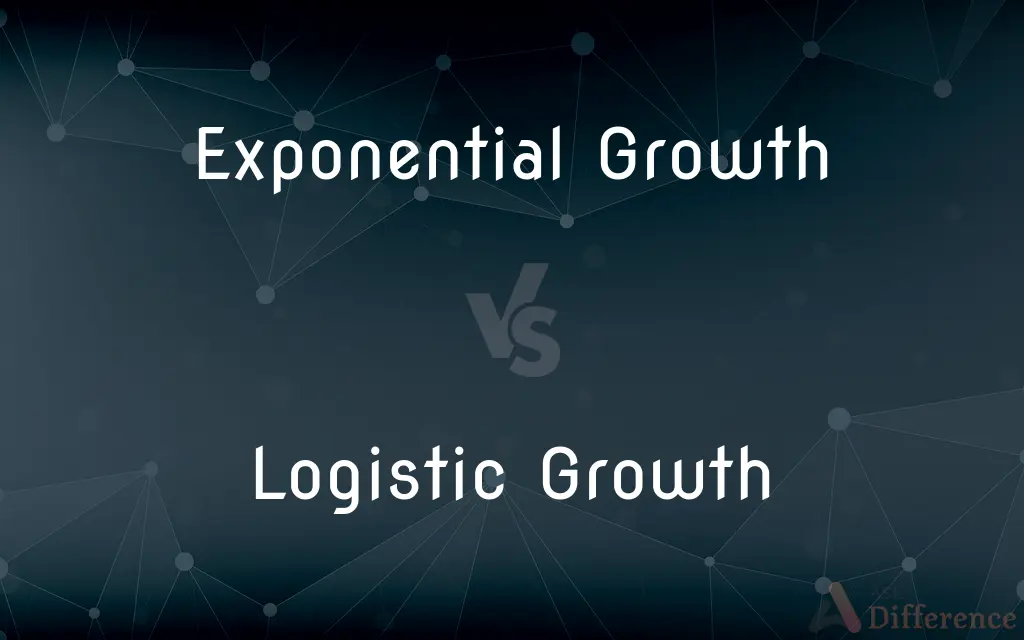Exponential vs Logistic Growth: Key Differences Explained

Understanding the dynamics of growth is crucial in various fields, from biology and economics to technology and environmental science. Two fundamental concepts that often come up in these discussions are exponential growth and logistic growth. While both describe how populations or systems increase over time, they differ significantly in their mechanisms and outcomes. This blog explores the key differences between exponential and logistic growth, helping you grasp these concepts and their real-world applications.
What is Exponential Growth?

Exponential growth occurs when a population or system increases at a rate proportional to its current size. In simpler terms, the larger the population, the faster it grows. This type of growth is often represented by the equation:
N(t) = N₀ × e^(rt)
Where:
- N(t) = population at time t
- N₀ = initial population
- r = growth rate
- e = base of the natural logarithm
Exponential growth is unlimited and assumes no constraints on resources or space. It is commonly observed in idealized scenarios or short-term situations where limiting factors are not yet significant.
📌 Note: Exponential growth is unsustainable in the long term due to finite resources.
What is Logistic Growth?

Logistic growth, on the other hand, accounts for limiting factors such as resource availability, competition, or environmental constraints. It suggests that growth slows down as the population approaches its carrying capacity—the maximum size the environment can sustain. The logistic growth model is represented by the equation:
N(t) = K / (1 + (K - N₀) / N₀ × e^(-rt))
Where:
- K = carrying capacity
- N(t) = population at time t
- N₀ = initial population
- r = growth rate
Logistic growth is self-limiting and more realistic for long-term population dynamics.
Key Differences Between Exponential and Logistic Growth

To better understand these concepts, let’s compare them side by side:
| Aspect | Exponential Growth | Logistic Growth |
|---|---|---|
| Definition | Growth rate proportional to current size. | Growth rate slows as population nears carrying capacity. |
| Equation | N(t) = N₀ × e^(rt) | N(t) = K / (1 + (K - N₀) / N₀ × e^(-rt)) |
| Resource Constraints | No constraints assumed. | Limited by carrying capacity. |
| Sustainability | Unsustainable long-term. | Sustainable up to carrying capacity. |
| Real-World Example | Bacterial growth in a lab. | Human population growth. |

When to Use Exponential vs Logistic Growth Models
- Exponential Growth: Ideal for short-term projections or scenarios with abundant resources.
- Logistic Growth: Suitable for long-term predictions where resource limitations are significant.
Checklist for Choosing the Right Growth Model
- Identify the context: Is it a short-term or long-term scenario?
- Assess resource availability: Are resources unlimited or limited?
- Consider carrying capacity: Does the environment have a maximum sustainable size?
- Evaluate growth rate: Is the growth accelerating or stabilizing?
📌 Note: Always consider real-world constraints when selecting a growth model.
Understanding the differences between exponential vs logistic growth is essential for accurate predictions and informed decision-making. While exponential growth highlights unchecked expansion, logistic growth provides a more realistic framework by accounting for environmental limits. By applying the right model, you can better analyze trends in populations, economies, or ecosystems.
What is the main difference between exponential and logistic growth?
+Exponential growth assumes unlimited resources and increases at a rate proportional to the population size, while logistic growth accounts for resource limitations and slows as the population nears its carrying capacity.
Where is exponential growth observed in real life?
+Exponential growth is often seen in controlled environments like bacterial cultures or short-term population increases where resources are abundant.
Why is logistic growth more realistic than exponential growth?
+Logistic growth is more realistic because it considers environmental constraints, such as limited resources and space, which eventually slow down population growth.
growth models,population dynamics,resource constraints,carrying capacity,sustainable growth,exponential vs logistic growth,population growth models,environmental science,economic growth,bacterial growth,logistic growth equation,exponential growth equation,real-world applications,growth rate,long-term projections,short-term projections.


